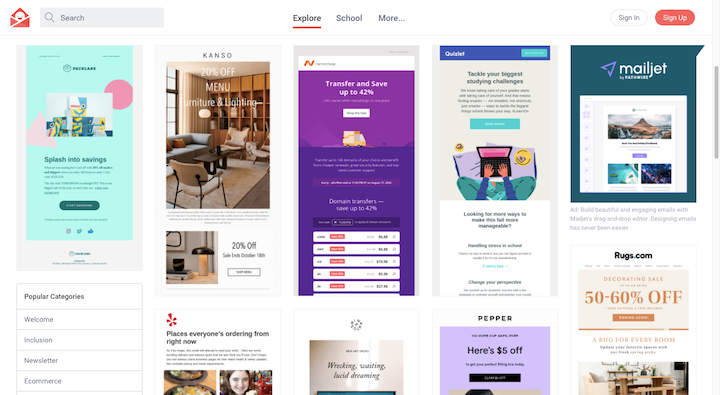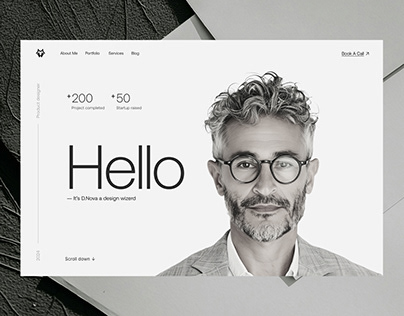Website Design Approaches for Higher Conversions
Website Design Approaches for Higher Conversions
Blog Article
Essential Concepts of Website Design: Producing User-Friendly Experiences
By focusing on customer demands and choices, developers can promote engagement and satisfaction, yet the ramifications of these concepts prolong beyond mere capability. Comprehending just how they link can considerably impact a site's general effectiveness and success, motivating a more detailed exam of their specific duties and collective influence on user experience.

Relevance of User-Centered Layout
Focusing on user-centered design is vital for creating reliable internet sites that meet the needs of their target audience. This technique places the customer at the leading edge of the style process, guaranteeing that the site not only operates well however additionally resonates with users on a personal degree. By comprehending the customers' habits, preferences, and objectives, developers can craft experiences that cultivate engagement and complete satisfaction.

Additionally, adopting a user-centered design viewpoint can lead to enhanced ease of access and inclusivity, accommodating a diverse target market. By thinking about numerous individual demographics, such as age, technical efficiency, and cultural backgrounds, developers can produce websites that are inviting and functional for all.
Inevitably, prioritizing user-centered style not just enhances user experience yet can also drive essential organization outcomes, such as boosted conversion rates and client commitment. In today's competitive digital landscape, understanding and focusing on user demands is an essential success factor.
Intuitive Navigation Frameworks
Effective website navigation is frequently an essential factor in enhancing user experience. Intuitive navigation structures allow individuals to discover info rapidly and effectively, reducing disappointment and enhancing interaction.
To create instinctive navigating, designers need to focus on clearness. Labels need to be acquainted and detailed to users, staying clear of lingo or uncertain terms. A hierarchical framework, with main groups leading to subcategories, can further aid individuals in comprehending the relationship in between different sections of the website.
Furthermore, incorporating visual signs such as breadcrumbs can assist individuals with their navigation course, enabling them to easily backtrack if required. The addition of a search bar also boosts navigability, approving individuals direct accessibility to content without needing to navigate via several layers.
Flexible and receptive Layouts
In today's electronic landscape, guaranteeing that internet sites function flawlessly across numerous devices is crucial for individual fulfillment - Website Design. Flexible and receptive layouts are 2 key techniques that allow this functionality, dealing with the diverse variety of screen dimensions and resolutions that customers may run into
Responsive designs utilize liquid grids and adaptable images, allowing the website to immediately readjust its elements based upon the display dimensions. This method gives a regular experience, where content reflows dynamically to fit the viewport, which is especially beneficial for mobile individuals. By using CSS media questions, developers can develop breakpoints that maximize the format for different devices without the need for separate designs.
Adaptive layouts, on the other hand, utilize predefined layouts for particular screen sizes. When an individual accesses the site, the Check Out Your URL server finds the tool and offers the ideal format, making certain an optimized experience for differing resolutions. This can bring about faster filling times and boosted efficiency, as each format is customized to the gadget's abilities.
Both responsive and flexible styles are critical for boosting customer involvement and complete satisfaction, ultimately contributing to the site's general efficiency in meeting its purposes.
Consistent Visual Hierarchy
Developing a regular aesthetic pecking order is pivotal for guiding customers with a web site's material. This principle makes you can try these out certain that info exists in a manner that is both engaging and instinctive, enabling users to conveniently browse and comprehend the product. A well-defined power structure utilizes various layout aspects, such as size, comparison, spacing, and color, to develop a clear distinction in between different kinds of content.

Furthermore, constant application of these visual hints throughout the website cultivates experience and trust fund. Individuals can promptly discover to identify patterns, making their interactions extra efficient. Inevitably, a strong aesthetic hierarchy not only boosts individual experience yet also enhances total site use, encouraging much deeper engagement and assisting in the desired actions on an internet site.
Accessibility for All Individuals
Access for all users is an essential facet of website style that makes certain everyone, despite their specials needs or capacities, can engage with and take advantage of on the internet web content. Designing with ease of access in mind entails applying practices that accommodate diverse individual demands, such as those with aesthetic, auditory, motor, or cognitive disabilities.
One crucial guideline is to follow the Web Material Availability Standards (WCAG), which give a structure for developing accessible digital experiences. This consists of using sufficient shade comparison, giving message choices for photos, and making certain that navigating is keyboard-friendly. In addition, using receptive style methods guarantees that web sites work efficiently across various devices and display dimensions, additionally improving ease of access.
Another crucial factor is making use of clear, succinct language that prevents jargon, making material understandable her explanation for all individuals. Engaging customers with assistive modern technologies, such as display readers, requires mindful interest to HTML semantics and ARIA (Accessible Abundant Web Applications) roles.
Ultimately, focusing on availability not only fulfills lawful responsibilities however likewise expands the target market reach, promoting inclusivity and improving user complete satisfaction. A commitment to accessibility mirrors a devotion to developing fair digital settings for all users.
Verdict
To conclude, the crucial principles of internet site layout-- user-centered style, instinctive navigation, receptive layouts, constant aesthetic hierarchy, and access-- collectively add to the production of user-friendly experiences. Website Design. By prioritizing customer needs and guaranteeing that all people can effectively engage with the site, developers boost usability and foster inclusivity. These principles not only improve user complete satisfaction yet additionally drive positive company results, inevitably showing the crucial value of thoughtful internet site layout in today's electronic landscape
These methods offer vital understandings right into customer assumptions and discomfort points, enabling designers to tailor the site's functions and content appropriately.Efficient web site navigating is commonly a critical factor in enhancing user experience.Developing a regular aesthetic power structure is crucial for leading customers via a web site's material. Eventually, a strong visual pecking order not only improves individual experience however likewise enhances overall site usability, motivating deeper interaction and assisting in the wanted activities on a website.
These concepts not just improve customer satisfaction yet also drive favorable service outcomes, eventually demonstrating the critical importance of thoughtful website layout in today's digital landscape.
Report this page